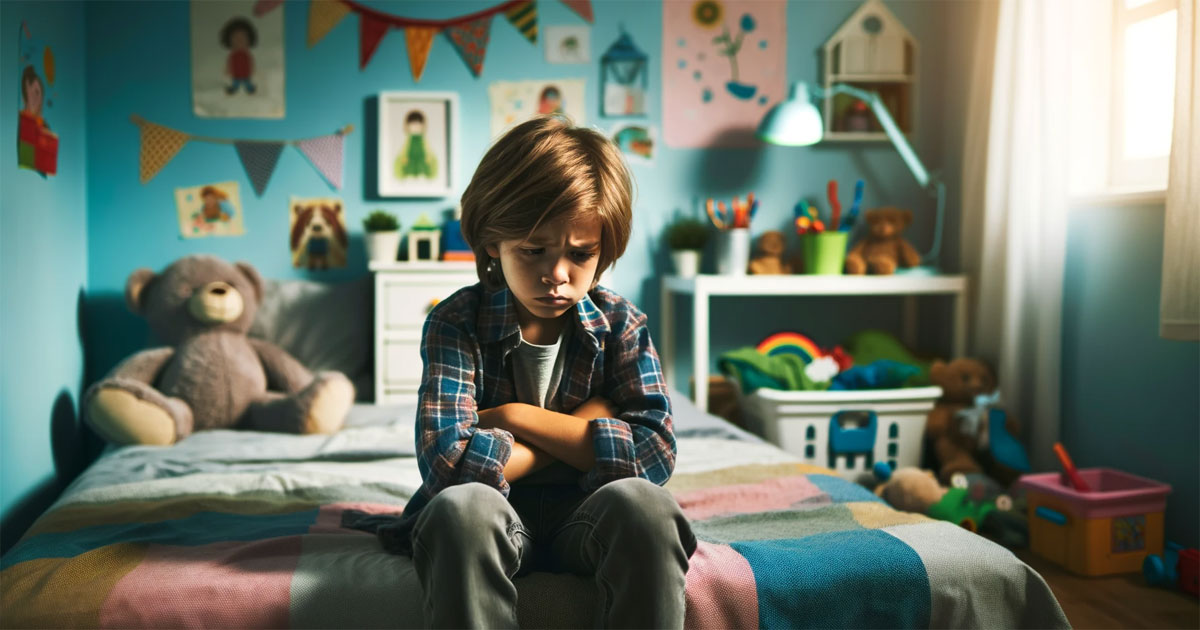
This article is suitable for adults caring for children and adolescents ages 10-16.
One issue parents often raise is how best to respond to moments when their child becomes very angry or upset. Situations or triggers that might spark these situations may include:
- a sibling coming into their bedroom without being invited,
- an unhelpful comment by someone at school that makes the child feel deeply hurt, or
- being asked to perform household tasks, homework or chores.
So called ‘big feelings’ are often distressing and overwhelming for parents as well as children or adolescents as it’s not always clear what is the best way to respond. It’s easy to become panicked, frozen or respond angrily ourselves. ASD, ADHD, learning difficulties, or even tensions, disruptions or ruptures in the family can also make these outbursts more frequent or intense.
Routines can be helpful
As a guide, it’s helpful to have a routine for how to respond in the moment, and how to equip your child or adolescent with the necessary tools to emotionally regulate when the next trigger arises.
Suggestions made by the Australian Parenting Website can be helpful as a guide for dealing with these moments when they occur.
Let’s say your child is feeling very angry while saying, “My teacher hates me!” and kicks a wall in your house.
Here are some helpful steps.
- Stay calm yourself. Listen to what your child/adolescent is saying.
- Notice and identify your child’s emotion. “It sounds like you are feeling frustrated because you say that the teacher hates you.”
- Name and connect the emotion your child is feeling. “I think you might be feeling angry because you are finding this situation at school to be really hard at the moment.”
- Pause and wait. Give your child time to take in what you have said. You could even try counting to five in your head.
- Support your child as they calm down. Make sure they are safe and wait nearby for a few minutes.
- Validate your child’s strong emotions while maintaining safe boundaries. “It’s OK to feel frustrated and disappointed. But it wasn’t OK to kick the wall.”
- Gently identify the problem and ask if the child needs help with problem solving. “It sounds like you have two upcoming assignments due next week. What parts are you finding challenging?”
Emotional Regulation and The Traffic Light System
As parents, an important task is to help children and adolescents develop the ability to emotionally regulate their emotions, that is, the ability to understand and manage their big feelings not only during incidents, but also when they are calm.
In this situation, using the “Traffic Light System” can be a helpful place to start. This was used by ICU nurses in the UK during the pandemic to provide a quick and easy way to identify how burnt out they were feeling at the point of handover shifts.
As a parent, you could try printing out a simple picture of a traffic light and sticking it to your fridge. If you notice your child starting to look or behave in an unsettled way, you can gently ask questions like, ‘How are you going on the traffic light? Are you feeling red, yellow or green?’
Helping children to identify and name their internal states is a really helpful tool when learning to self regulate.
Getting “Back to Green”
Another framework that can be helpful to visualise emotional dysregulation is Polyvagal Theory developed by American Psychologist Stephen Porges. It is quite similar to the traffic light system, but visualises how the autonomic nervous system’s “Fight/Flight/Freeze” response explains angry outbursts as shown below.

Using such a chart can help children identify what causes them to experience a “fight” response and ultimately how to “get back to the green zone”. Some helpful strategies include, stepping back and taking a break, deliberately slowing down and taking several deep breaths, changing the activity and doing something physical like outdoor play.
Asking “The Magic Question”
Yet another approach relates to “The Magic Question” posed by Tom Nehmy in his book Apples for the Mind. The question is: “What is the most helpful thing I could do at this moment?”
This helps children to think of different possible actions they could choose to take in an anger producing situation. For example, you could coach a child to ask for help from a parent, teacher or friend rather than feeling trapped which can lead to an angry outburst.
On a final note, there are sometimes broader or larger issues that ultimately make the angry outbursts more frequent or intense.
Common causes can sometimes include wanting more time and attention from one or both parents, experiencing difficulties with friendships or tough teachers at school, dealing with a school bully, or wrestling with personal identity challenges.
It’s sometimes helpful to discuss these broader issues with a Psychologist. Of course, we are here to help!
You are welcome to book an appointment with our team to help understand and implement these ideas, especially if it is causing significant distress.
Attuned Psychology Team
Subscribe to our newsletter Attuned Life
Would you be interested in receiving our occasional newsletter, event information and other useful tips via e-mail?

